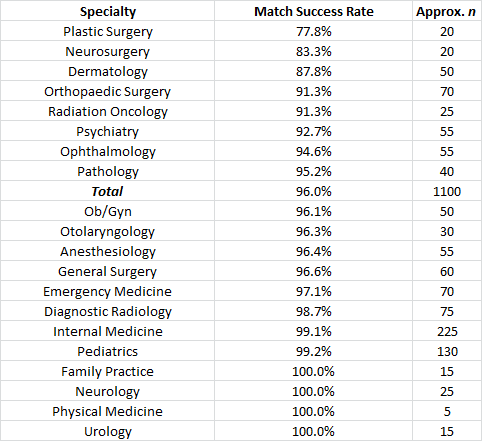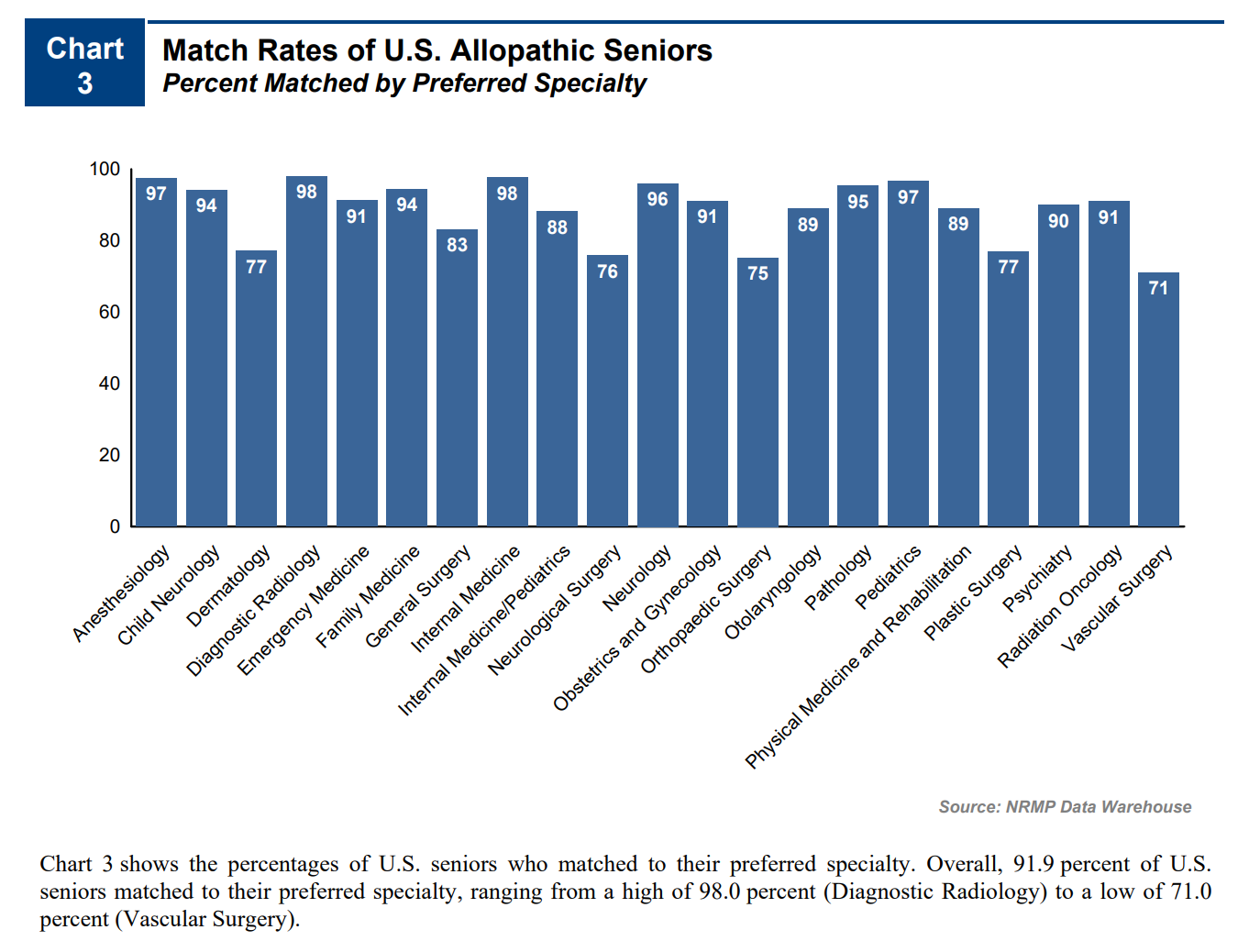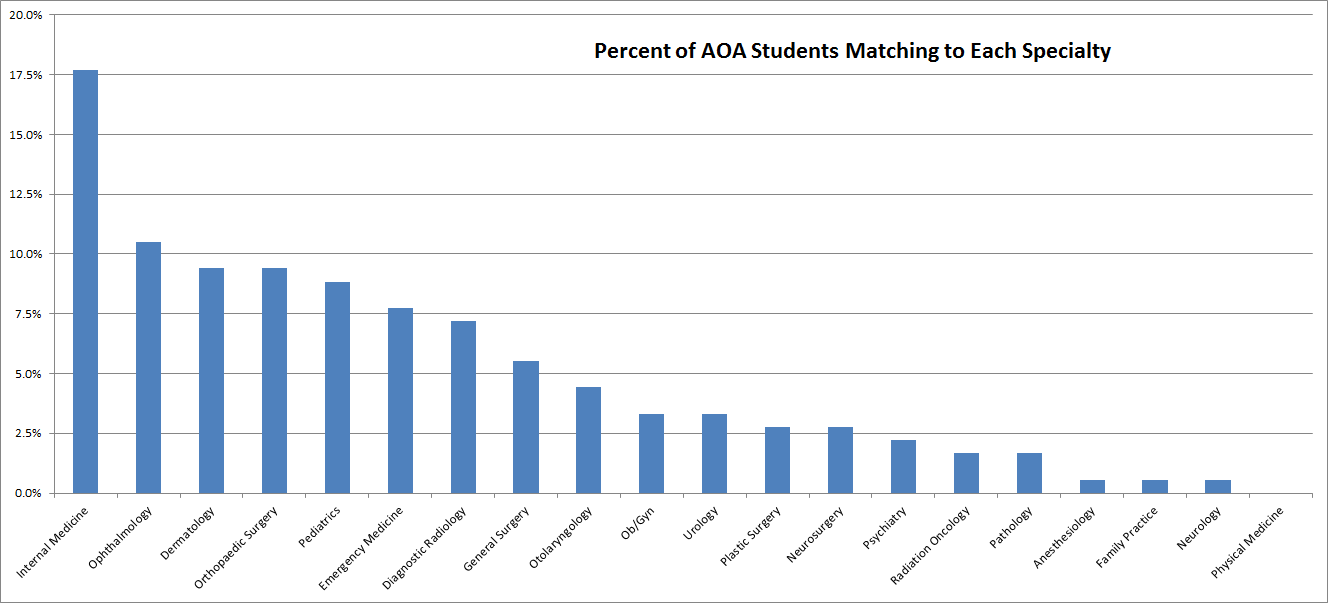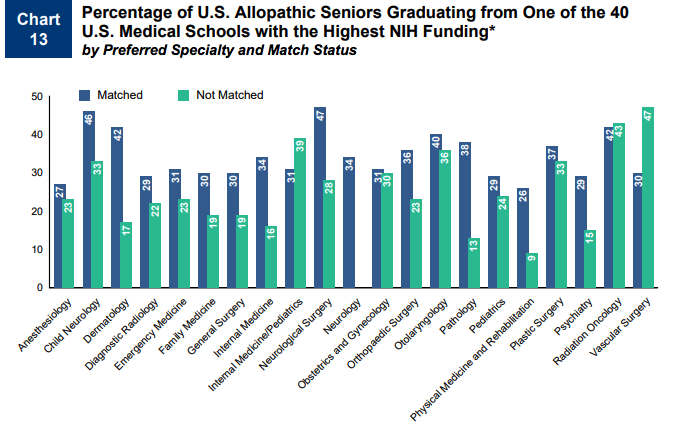- Joined
- Apr 6, 2014
- Messages
- 14,146
- Reaction score
- 22,778
Hey everyone.
Recently discovered some interesting data and thought I'd share two highlights. The following comes from a decade of match data at a top 10 med school, encompassing some ~1100 students total.
First: It's conventional wisdom on SDN that going to big name programs makes it easier to match competitively. But, what does that really mean? Do 95%+ of students at [top program] that want derm, ortho, plastics etc. succeed in matching it?

For reference, here are the national match rates for 2016 per the NRMP:

Second: What do the top of the class students at a top program tend to match? Do they all swarm the lifestyle specialties? Do they all want to be academics and match IM or other specialties with a lot of research? Take a look at the percent of AOA students choosing each (approx. 175 total AOA students):

Enjoy.
Recently discovered some interesting data and thought I'd share two highlights. The following comes from a decade of match data at a top 10 med school, encompassing some ~1100 students total.
First: It's conventional wisdom on SDN that going to big name programs makes it easier to match competitively. But, what does that really mean? Do 95%+ of students at [top program] that want derm, ortho, plastics etc. succeed in matching it?

For reference, here are the national match rates for 2016 per the NRMP:

Second: What do the top of the class students at a top program tend to match? Do they all swarm the lifestyle specialties? Do they all want to be academics and match IM or other specialties with a lot of research? Take a look at the percent of AOA students choosing each (approx. 175 total AOA students):

Enjoy.


